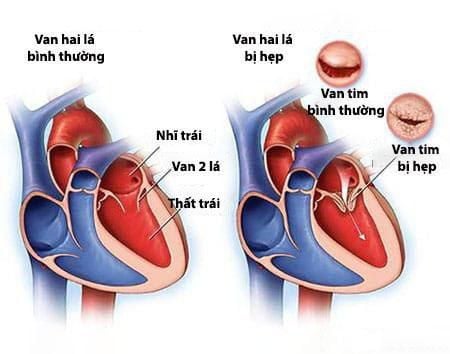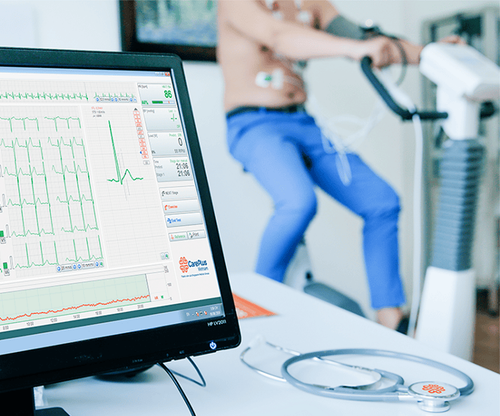This is an automatically translated article.
Myocardial perfusion scintigraphy is a subclinical technique to help evaluate cardiac perfusion function, aiming to find the cause of some cardiovascular diseases that appear with only chest pain. In addition to finding the cause to diagnose the disease, cardiac scintigraphy is also used as a means to evaluate patients after a myocardial infarction, from which there are further indications for the patient.
1. Myocardial Perfusion
Cardiac muscle is a type of muscle present in the heart, making up the structures of the heart and pumping blood from the heart to the arteries and to almost all organs in the body. Myocardial perfusion is a very necessary activity for the heart muscle to be able to perform the important functions of the heart for the whole body, if this activity is affected or there are abnormal problems. It will lead to some symptoms such as angina.For good myocardial perfusion, one of the most important arteries is the coronary artery. If the coronary artery is narrowed in one or many branches, the blood supply to the heart muscle when performing physically demanding activities will be reduced, at this time the symptoms of angina will be evident. and greatly affect the health of patients.
Therefore, in order to be able to survey and evaluate the cardiac perfusion function in order to take timely supportive measures when the patient has angina, myocardial perfusion scan is considered as one of the top choices in this area. Myocardial perfusion scintigraphy helps to find the cause of angina, especially when the patient is exerted, to investigate the blood supply to the myocardium, the coronary stenosis as well as the degree of stenosis and damage of the myocardium after myocardial perfusion. heart attack occurs.

Xạ hình tưới máu cơ tim giúp tìm ra nguyên nhân gây đau thắt ngực
2. Myocardial perfusion scintigraphy
Myocardial perfusion scintigraphy uses a radioisotope which is a chemical that emits gamma rays that can be observed when injected intravenously into the patient's body. Regarding radioactive isotopes, there are many types, each type will be suitable and concentrated in many different organs in the body, so to determine the location of the organ to be investigated, it is necessary to choose the appropriate type of radioisotope. with that agency.
For myocardial perfusion scintigraphy, it will be appropriate for certain radioisotopes to follow the venous blood route to the myocardium. Through this method, the sites of the myocardium that are still fully nourished will have a very high ability to absorb radioactive isotopes, in contrast to the areas of the myocardium that are not well nourished due to the arterial segment. Coronary narrowing or atherosclerotic disease will absorb radioactive isotopes very poorly, leading to angina.
Gamma rays emitted by radioisotopes are recorded by the gamma camera, which is a device that records the signal, then transmits all that is received to the computer head and produces images similar to Corresponding to radioisotope absorption of the myocardium, the dark color represents more or less absorption.
How to perform myocardial perfusion scan is very diverse, can be taken continuously while the patient is at rest and exercise immediately after, or can be taken independently between the two states of rest and exercise. this.

Chụp xạ hình tưới máu cơ tim được thực hiện rất đa dạng
In addition, the patient may be required to ride a bicycle to increase the heart rate, depending on the fitness of each patient, the cycling time will vary in each specific case. An extremely important thing is that during exercise, the patient will have a continuous electrocardiogram to monitor the cardiovascular status of the patient's body. The time of myocardial perfusion scintigraphy usually lasts from 15 minutes to 30 minutes and can be performed many times to get the most accurate results, helping to make the diagnosis more certain.
After scanning, radioactive isotopes usually do not leave any complications and follow the natural decay process, then they will be released into the outside environment through urine and feces. Therefore, after going to the toilet, it is necessary to thoroughly clean this area to avoid the risk of radioactive contamination to others, especially women who are pregnant because there is a risk of affecting the development of the fetus. fetus during this time. If the patient has a history of asthma, he will also experience wheezing as a result of the medication to increase the heart rate, but this condition is very rare, so when there are any signs, the patient should report it immediately. with the treating physician for treatment.

Chất đồng vị phóng xạ được thải ra môi trường qua đường nước tiểu, phân
3. Conclusion
Myocardial perfusion scintigraphy plays an extremely important role in the field of cardiology, especially the pathology related to coronary artery stenosis as well as myocardial perfusion dysfunction. In order to perform this technique in the most accurate and safest way, patients should seek out reputable medical facilities, with expertise and long experience in this field to evaluate cardiac perfusion function. in the safest and most effective way.
Currently, Vinmec International General Hospital is using a modern 512-slice CT Revolution scanner system of GE Healthcare (USA), with software to capture and analyze myocardial perfusion images. The machine can take high definition heart and coronary artery scan with any heart rate. This is one of the modern, high-precision equipment that can greatly assist doctors in diagnosing coronary artery diseases that can cause angina.
To schedule an examination and consultation, please come directly to Vinmec health system or register for an online examination on the website for service.
Please dial HOTLINE for more information or register for an appointment HERE. Download MyVinmec app to make appointments faster and to manage your bookings easily.













